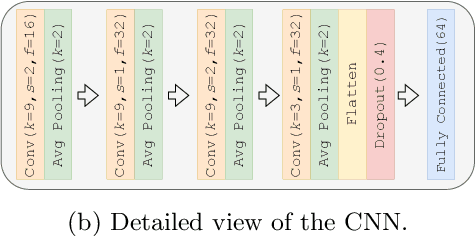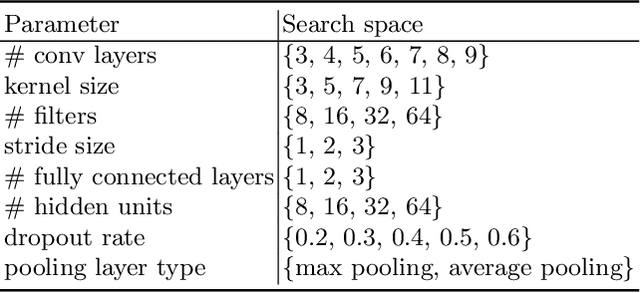Silvia Makowski
Detection of ADHD based on Eye Movements during Natural Viewing
Jul 14, 2022



Abstract:Attention-deficit/hyperactivity disorder (ADHD) is a neurodevelopmental disorder that is highly prevalent and requires clinical specialists to diagnose. It is known that an individual's viewing behavior, reflected in their eye movements, is directly related to attentional mechanisms and higher-order cognitive processes. We therefore explore whether ADHD can be detected based on recorded eye movements together with information about the video stimulus in a free-viewing task. To this end, we develop an end-to-end deep learning-based sequence model which we pre-train on a related task for which more data are available. We find that the method is in fact able to detect ADHD and outperforms relevant baselines. We investigate the relevance of the input features in an ablation study. Interestingly, we find that the model's performance is closely related to the content of the video, which provides insights for future experimental designs.
Discriminative Viewer Identification using Generative Models of Eye Gaze
Mar 25, 2020


Abstract:We study the problem of identifying viewers of arbitrary images based on their eye gaze. Psychological research has derived generative stochastic models of eye movements. In order to exploit this background knowledge within a discriminatively trained classification model, we derive Fisher kernels from different generative models of eye gaze. Experimentally, we find that the performance of the classifier strongly depends on the underlying generative model. Using an SVM with Fisher kernel improves the classification performance over the underlying generative model.
Deep Eyedentification: Biometric Identification using Micro-Movements of the Eye
Jul 04, 2019



Abstract:We study involuntary micro-movements of the eye for biometric identification. While prior studies extract lower-frequency macro-movements from the output of video-based eye-tracking systems and engineer explicit features of these macro-movements, we develop a deep convolutional architecture that processes the raw eye-tracking signal. Compared to prior work, the network attains a lower error rate by one order of magnitude and is faster by two orders of magnitude: it identifies users accurately within seconds.
A Discriminative Model for Identifying Readers and Assessing Text Comprehension from Eye Movements
Sep 21, 2018



Abstract:We study the problem of inferring readers' identities and estimating their level of text comprehension from observations of their eye movements during reading. We develop a generative model of individual gaze patterns (scanpaths) that makes use of lexical features of the fixated words. Using this generative model, we derive a Fisher-score representation of eye-movement sequences. We study whether a Fisher-SVM with this Fisher kernel and several reference methods are able to identify readers and estimate their level of text comprehension based on eye-tracking data. While none of the methods are able to estimate text comprehension accurately, we find that the SVM with Fisher kernel excels at identifying readers.
 Add to Chrome
Add to Chrome Add to Firefox
Add to Firefox Add to Edge
Add to Edge